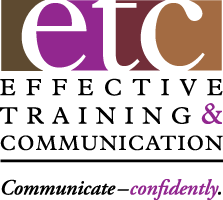Actually, that should be ‘Phil’s Practical Principle – Proper Preparation Prevents Poor Presentations.’ I do love alliteration.
Let’s narrow the topic to workplace presentations – team or company updates, customer updates, sales pitches, etc. And let’s assume that you are initiating the presentation, rather than responding to an instruction from management to deliver one. We can cover that topic next time. Here are best practices for successful planning:
* Precisely identify your objectives and intended outcomes resulting from the presentation. What do you want your audience to know, do or feel after listening to you?
* Thoroughly analyze the primary audience’s demographics, psychographics, needs, attitudes, potential objections, etc. The better you know your audience, the better you can prepare to communicate with them.
* Plan the content to accomplish those objectives for that audience in an effective, efficient and engaging manner. And let’s emphasize ‘engaging’ here. An excellent workplace presentation is more conversation than speech and gets people involved in the process.
* Create a short, attention-getting, focused intro that tells the audience why they’re there, what they’ll hear, why it’s important, what they should do with the information and why you are worth listening to and respecting.
* Then create the content around three or four sub points, all supporting the main point, which is your primary objective. Support them with appropriate and audience-friendly facts, statistics, expert comments, brief examples or illustrations. Everything you say must pass the ‘who cares’ test. And the ‘who’ is them, not you.
* Also create an even shorter summary that restates your sub points and main point and connects the audience to their next steps or your call to action. They’ll remember most what they hear last.
* If you decided to hold questions until the end, invite them before your summary.
Then deliver this message with enthusiasm and passion. Project confidence, credibility and competence … and look like you’re having fun doing it. We’ll discuss proper practice next time.
So, if you want to prevent poor presentations … wait for it … properly prepare!
